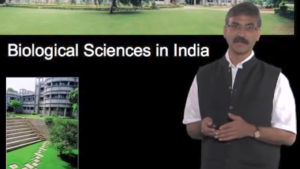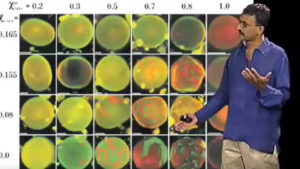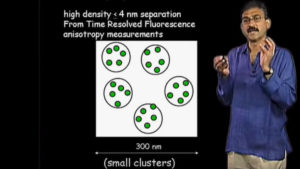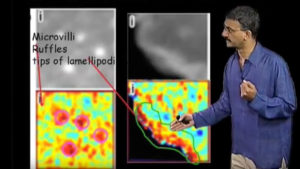Satyajit “Jitu” Mayor was born in Baroda, India and received his MSc in Chemistry from IIT, Mumbai. He obtained his Ph.D. in Life Sciences from the Rockefeller University, New York, working in the Laboratory of Molecular Parasitology with Prof. George Cross where he studied the biosynthesis of GPI-anchors in the African sleeping sickness parasite, Trypanosoma brucei. He then moved to the Department of Pathology at Columbia University, New York, to study endocytic trafficking of lipids and proteins in Prof. Frederick R. Maxfield’s laboratory, where he developed tools to study the trafficking of GPI-anchored proteins in mammalian cells using quantitative fluorescence microscopy.
In 1996, Satyajit Mayor moved to the National Centre for Biological Sciences (NCBS) in Bangalore, India where he is now Professor in the area of Cellular Organisation and Signalling. At NCBS, he has taken a multi-disciplinary approach combining cell biology with physics and chemistry to study the organization and endocytic trafficking of transmembrane and lipid-anchored proteins in membranes of living cells. The trajectory of this work has led him to explore the fine structure of the plasma membrane on the one hand (the subject of this lecture), and on the other, utilize tools of molecular genetics to explore the implications of these findings in the construction of endocytic pathways in cells, and the roles they may play in the building of signaling gradients in tissues of Drosophila.
Mayor is the Dean of Research and Professor of Cellular Organization and Signaling at the National Centre for Biological Sciences in Bangalore, India where his lab studies endocytic trafficking and membrane structure. Mayor also participates in numerous national and international collaborations including teaching at the Marine Biological Laboratory in Woods Hole, Massachusetts.








